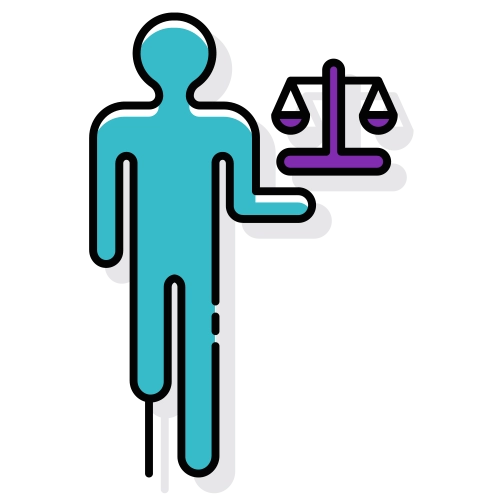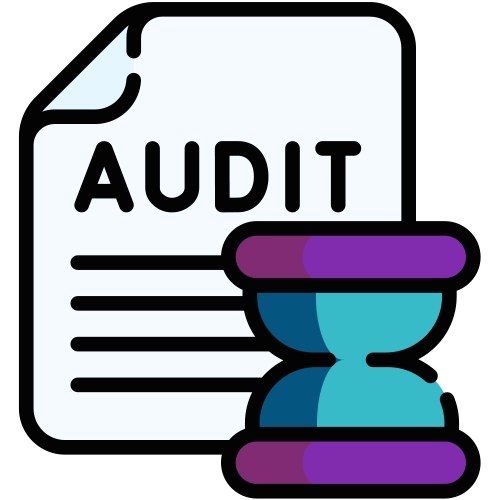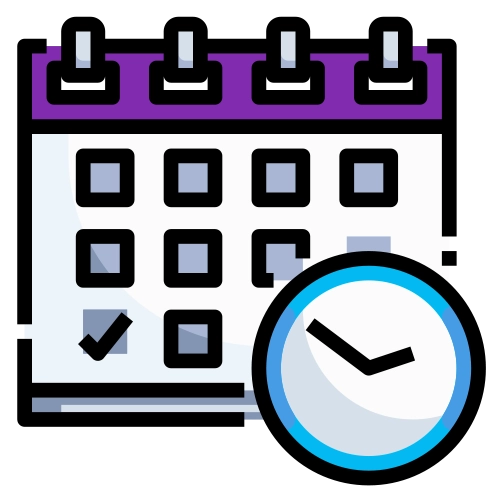 In today's digital age, web accessibility has become a vital aspect of creating an inclusive online experience for users of all abilities. It is crucial to ensure that websites are designed and developed with the needs of individuals with disabilities in mind. At Sagentic Web Design, we recognize the significance of web accessibility and are fully committed to compliance with Section 508 of the Rehabilitation Act and Colorado's House Bill 21-1110.
In today's digital age, web accessibility has become a vital aspect of creating an inclusive online experience for users of all abilities. It is crucial to ensure that websites are designed and developed with the needs of individuals with disabilities in mind. At Sagentic Web Design, we recognize the significance of web accessibility and are fully committed to compliance with Section 508 of the Rehabilitation Act and Colorado's House Bill 21-1110.
Web accessibility goes beyond mere compliance with legal standards; it is about creating an inclusive online environment where everyone can access and interact with digital content seamlessly. Section 508 of the Rehabilitation Act mandates that federal employees and the public have comparable access to electronic and information technology provided by the federal government.
Similarly, Colorado's House Bill 21-1110 extends these accessibility requirements to local government agencies in the state.
By adhering to these standards, Sagentic Web Design ensures that individuals with disabilities have equal access to digital services, regardless of their impairments. These standards not only promote inclusivity but also enable individuals to fully engage with and benefit from the information, products, and services offered through websites.
We believe that every user should have the same opportunities and experiences online. That is why our team at Sagentic Web Design is dedicated to implementing accessible design and development practices throughout the websites we create. We strive to go beyond the legal requirements, making accessibility a fundamental aspect of our approach to web design.
In the following sections, we will delve deeper into our expertise in accessibility compliance, the techniques and practices we employ to ensure accessibility, and our commitment to maintaining these standards as websites evolve. With Sagentic Web Design, you can trust that your website will not only meet the necessary accessibility guidelines but also provide an enhanced user experience for individuals of all abilities.
Understanding Section 508 and HB21-1110
 Web accessibility is not only a matter of inclusivity but also a legal requirement. In the United States, Section 508 of the Rehabilitation Act is a significant piece of legislation that addresses accessibility standards for federal employees and members of the public.
Web accessibility is not only a matter of inclusivity but also a legal requirement. In the United States, Section 508 of the Rehabilitation Act is a significant piece of legislation that addresses accessibility standards for federal employees and members of the public.
Enacted in 1998, Section 508 aims to eliminate barriers in electronic and information technology (EIT) and ensure that individuals with disabilities have comparable access to digital services provided by the federal government.
Under Section 508, federal agencies are required to make their EIT accessible to individuals with disabilities. This includes websites, software, applications, and other digital content. By complying with Section 508, federal agencies can provide equal opportunities and ensure that people with disabilities can effectively interact with and benefit from their services.
In addition to Section 508, Colorado's House Bill 21-1110 further extends accessibility requirements to local government agencies within the state. This legislation recognizes the importance of inclusivity and equal access to digital services for individuals with disabilities at the local level. It ensures that people with disabilities are not excluded from receiving services or benefits due to inaccessible websites or digital content.
The scope of these laws is extensive, aiming to create an inclusive online environment that removes barriers and provides equal opportunities for individuals with disabilities. By complying with Section 508 and HB21-1110, government agencies, including both federal and local entities, can ensure that their digital services are accessible to all, regardless of disabilities.
The significance of these laws cannot be overstated. They play a crucial role in promoting equal access to information, services, and opportunities in the digital realm. By adhering to Section 508 and HB21-1110, Sagentic Web Design embraces its responsibility to contribute to a more inclusive and accessible digital landscape.
Sagentic Web Design's Expertise in Accessibility Compliance
 At Sagentic Web Design, we have amassed extensive experience and knowledge in the realm of creating accessible websites. We understand that web accessibility is not an afterthought but an integral part of the design and development process. Our team is dedicated to staying at the forefront of accessibility standards, ensuring that every website we create meets the needs of individuals with disabilities.
At Sagentic Web Design, we have amassed extensive experience and knowledge in the realm of creating accessible websites. We understand that web accessibility is not an afterthought but an integral part of the design and development process. Our team is dedicated to staying at the forefront of accessibility standards, ensuring that every website we create meets the needs of individuals with disabilities.
Our commitment to accessibility begins with our team's specialized training and expertise in adhering to the Web Content Accessibility Guidelines (WCAG). The WCAG, developed by the World Wide Web Consortium (W3C), provides comprehensive guidelines for making web content more accessible.
We are well-versed in WCAG 2.1, the latest version of the guidelines, which offers a framework for designing websites that are perceivable, operable, understandable, and robust for all users.
To ensure compliance with Section 508 of the Rehabilitation Act and HB21-1110, Sagentic Web Design employs a meticulous approach. We integrate accessibility considerations from the early stages of the website development process, addressing accessibility issues such as proper markup, clear navigation, and text alternatives for non-text content.
By adhering to WCAG standards, we make websites accessible to individuals with various disabilities, including visual impairments, hearing impairments, motor disabilities, and cognitive impairments.
Our team understands the significance of various accessibility features and implements them effectively. For instance, we provide alternative text descriptions for images, allowing screen reader users to understand the visual content. We ensure that websites can be navigated using a keyboard alone, enabling individuals who cannot use a mouse to access all functionalities.
Additionally, we pay careful attention to color contrast to accommodate users with low vision or color-blindness. Furthermore, we provide transcripts for audio content, making sure that individuals with hearing impairments can access the information conveyed through multimedia.
By employing these techniques and practices, Sagentic Web Design ensures that websites not only meet the legal requirements of Section 508 and HB21-1110 but also provide an enhanced user experience for all individuals, regardless of their physical abilities.
Techniques and Practices for Accessibility
 At Sagentic Web Design, we employ a range of techniques and best practices to ensure that the websites we create are accessible to individuals with disabilities. Our goal is to enhance the user experience for all individuals, irrespective of their physical abilities. Here are some of the key techniques we utilize:
At Sagentic Web Design, we employ a range of techniques and best practices to ensure that the websites we create are accessible to individuals with disabilities. Our goal is to enhance the user experience for all individuals, irrespective of their physical abilities. Here are some of the key techniques we utilize:
- Alternative Text for Images
We understand the importance of providing alternative text descriptions, also known as alt text, for images on websites. Alt text allows individuals using screen readers to understand the content of images, ensuring that visual information is conveyed effectively. - Keyboard Navigation
We ensure that websites can be navigated easily using a keyboard alone. This is particularly essential for individuals with motor disabilities who may have difficulty using a mouse. Keyboard navigation allows them to access all interactive elements and navigate through the website efficiently. - Color Contrast Optimization
We pay close attention to color contrast when designing websites. Sufficient color contrast between text and background ensures that individuals with low vision or color blindness can read and comprehend the content without difficulty. We follow WCAG guidelines for color contrast ratios to ensure accessibility. - Transcripts for Audio Content
For multimedia content such as videos or podcasts, we provide transcripts to ensure that individuals with hearing impairments can access the information conveyed through audio. Transcripts enable them to read the text equivalent of the audio content and ensure equal access to the information presented.
By implementing these techniques, we strive to make websites inclusive and accessible to all users. We recognize that accessibility is not a one-size-fits-all approach, as individuals have different needs and abilities. Therefore, we approach each project with a focus on customization and tailor the accessibility features to meet the specific requirements of the target audience.
Our aim is to create an inclusive online environment where individuals with disabilities can engage with digital content seamlessly, empowering them to access information, products, and services independently.
Maintaining Accessibility Standards
 At Sagentic Web Design, we are committed to upholding accessibility standards throughout the entire lifecycle of a website. We understand that accessibility is not a one-time effort but an ongoing commitment to inclusivity and equal access. Here's how we ensure that accessibility remains a priority:
At Sagentic Web Design, we are committed to upholding accessibility standards throughout the entire lifecycle of a website. We understand that accessibility is not a one-time effort but an ongoing commitment to inclusivity and equal access. Here's how we ensure that accessibility remains a priority:
- Regular Reviews and Audits
We conduct regular reviews and audits of websites to ensure ongoing compliance with accessibility standards. These reviews involve evaluating the website's structure, design elements, and functionality to identify any accessibility barriers. By performing these assessments, we can address any potential issues and make necessary adjustments to maintain accessibility. - Evolving Compliance
Accessibility guidelines and best practices are continuously evolving. At Sagentic Web Design, we stay up-to-date with the latest developments in accessibility standards, including updates to the WCAG guidelines. We adapt our design and development practices to align with the most current recommendations, ensuring that our websites meet the latest accessibility requirements. - Training and Education
Our team participates in regular training sessions and stays informed about advancements in accessibility technologies and practices. By continuously expanding our knowledge and expertise, we can effectively implement accessibility features and provide the best possible user experience for individuals with disabilities. - Collaboration and Partnerships
We actively collaborate with clients, stakeholders, and accessibility experts to ensure that websites meet the needs of their target audience. By involving all relevant parties, we can gather insights, feedback, and suggestions that contribute to the ongoing accessibility improvements of the website.
Maintaining accessibility standards is crucial because technology, user expectations, and regulations continue to evolve. By prioritizing ongoing compliance, Sagentic Web Design ensures that websites remain accessible as they grow and evolve, providing equal access to digital services for all individuals.
Sagentic Web Design is committed to maintaining accessibility standards throughout the lifecycle of a website. Through regular reviews, staying up-to-date with evolving guidelines, and continuous education, we ensure that our websites remain accessible to individuals with disabilities. Our goal is to create an online environment that is inclusive, equal, and empowers all users to engage with digital content.
Colorado HB21-1110 Compliance Deadline
 It is essential to highlight that all Colorado state agencies and local governments have a critical deadline to meet regarding accessibility compliance. As mandated by HB21-1110 (Accessibility Law for Colorado State and Local Government), these entities are required to be fully compliant with accessibility standards by July 1, 2024.
It is essential to highlight that all Colorado state agencies and local governments have a critical deadline to meet regarding accessibility compliance. As mandated by HB21-1110 (Accessibility Law for Colorado State and Local Government), these entities are required to be fully compliant with accessibility standards by July 1, 2024.
This deadline reflects the commitment of the state of Colorado towards inclusivity and equal access to digital services for individuals with disabilities. It ensures that government agencies at both the state and local levels prioritize accessibility in their online presence, providing a level playing field for all citizens.
By aligning with HB21-1110, Colorado state agencies and local governments are taking significant steps towards creating a more inclusive digital landscape. They are recognizing the rights of individuals with disabilities to have comparable access to information, services, and benefits provided through digital platforms.
This mandate serves as a reminder of the importance of accessibility for government entities, emphasizing their responsibility to serve all members of the community, regardless of their abilities. It showcases the commitment of the state of Colorado to foster inclusivity and ensure that no one is left behind in the digital age.
Sagentic Web Design stands ready to assist Colorado state agencies and local governments in achieving their accessibility goals by the designated deadline. With our expertise in accessibility compliance, we can help these entities create websites that meet the requirements of HB21-1110 and provide equal access to all individuals.
Together, we can create an inclusive digital environment in Colorado, where everyone has the opportunity to engage with government services and information on an equal footing. Let us work hand in hand to meet the compliance deadline and pave the way for a more accessible future.
